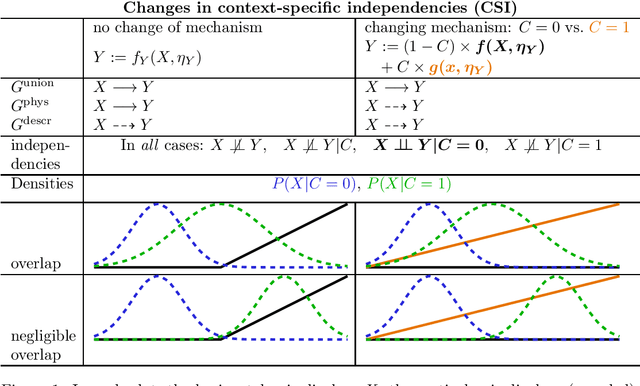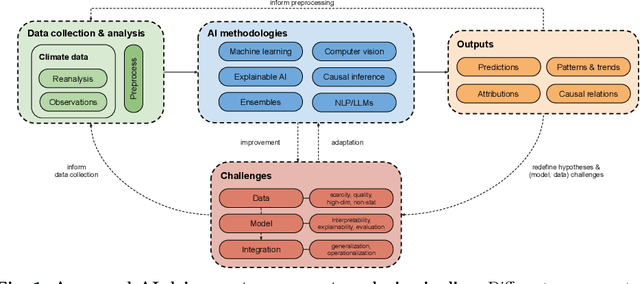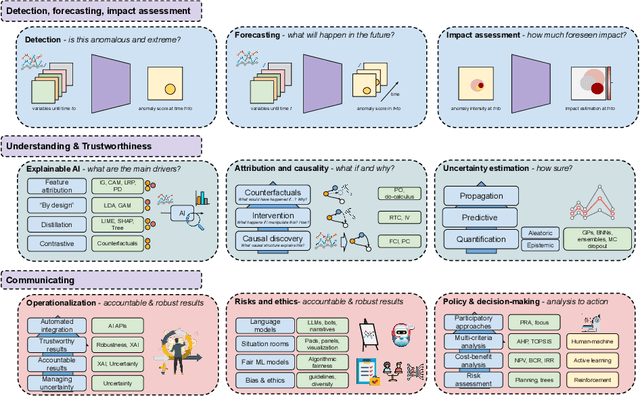Martin Rabel
Causal discovery with endogenous context variables
Dec 06, 2024



Abstract:Causal systems often exhibit variations of the underlying causal mechanisms between the variables of the system. Often, these changes are driven by different environments or internal states in which the system operates, and we refer to context variables as those variables that indicate this change in causal mechanisms. An example are the causal relations in soil moisture-temperature interactions and their dependence on soil moisture regimes: Dry soil triggers a dependence of soil moisture on latent heat, while environments with wet soil do not feature such a feedback, making it a context-specific property. Crucially, a regime or context variable such as soil moisture need not be exogenous and can be influenced by the dynamical system variables - precipitation can make a dry soil wet - leading to joint systems with endogenous context variables. In this work we investigate the assumptions for constraint-based causal discovery of context-specific information in systems with endogenous context variables. We show that naive approaches such as learning different regime graphs on masked data, or pooling all data, can lead to uninformative results. We propose an adaptive constraint-based discovery algorithm and give a detailed discussion on the connection to structural causal models, including sufficiency assumptions, which allow to prove the soundness of our algorithm and to interpret the results causally. Numerical experiments demonstrate the performance of the proposed method over alternative baselines, but they also unveil current limitations of our method.
Causal Modeling in Multi-Context Systems: Distinguishing Multiple Context-Specific Causal Graphs which Account for Observational Support
Oct 27, 2024
Abstract:Causal structure learning with data from multiple contexts carries both opportunities and challenges. Opportunities arise from considering shared and context-specific causal graphs enabling to generalize and transfer causal knowledge across contexts. However, a challenge that is currently understudied in the literature is the impact of differing observational support between contexts on the identifiability of causal graphs. Here we study in detail recently introduced [6] causal graph objects that capture both causal mechanisms and data support, allowing for the analysis of a larger class of context-specific changes, characterizing distribution shifts more precisely. We thereby extend results on the identifiability of context-specific causal structures and propose a framework to model context-specific independence (CSI) within structural causal models (SCMs) in a refined way that allows to explore scenarios where these graph objects differ. We demonstrate how this framework can help explaining phenomena like anomalies or extreme events, where causal mechanisms change or appear to change under different conditions. Our results contribute to the theoretical foundations for understanding causal relations in multi-context systems, with implications for generalization, transfer learning, and anomaly detection. Future work may extend this approach to more complex data types, such as time-series.
AI for Extreme Event Modeling and Understanding: Methodologies and Challenges
Jun 28, 2024



Abstract:In recent years, artificial intelligence (AI) has deeply impacted various fields, including Earth system sciences. Here, AI improved weather forecasting, model emulation, parameter estimation, and the prediction of extreme events. However, the latter comes with specific challenges, such as developing accurate predictors from noisy, heterogeneous and limited annotated data. This paper reviews how AI is being used to analyze extreme events (like floods, droughts, wildfires and heatwaves), highlighting the importance of creating accurate, transparent, and reliable AI models. We discuss the hurdles of dealing with limited data, integrating information in real-time, deploying models, and making them understandable, all crucial for gaining the trust of stakeholders and meeting regulatory needs. We provide an overview of how AI can help identify and explain extreme events more effectively, improving disaster response and communication. We emphasize the need for collaboration across different fields to create AI solutions that are practical, understandable, and trustworthy for analyzing and predicting extreme events. Such collaborative efforts aim to enhance disaster readiness and disaster risk reduction.
 Add to Chrome
Add to Chrome Add to Firefox
Add to Firefox Add to Edge
Add to Edge